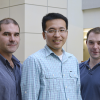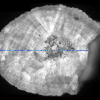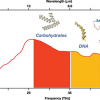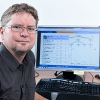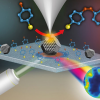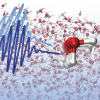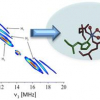Spectroscopy News
A metamaterial absorber capable of highly sensitive infrared detection enhances the spectroscopy of tiny molecular details.
A new study led by scientists at The Scripps Research Institute (TSRI) shows that gas chromatography mass spectrometry fundamentally alters the samples it analyses.
Kidney stones rank among the most common illnesses. Their recurrence may be prevented with the right post-operative care. However, for this to be effective, the composition of the stones needs to be known. Fraunhofer researchers are developing a Raman spectroscopy based system for rapid analysis of urinary stones immediately after the surgical procedure.
Agilent Technologies has announced the opening of a new centre for life science research in partnership with Carleton University in Ottawa, Canada. The Carleton Mass Spectrometry Center, located in the university’s department of chemistry, is equipped with state-of-the-art mass spectrometers, gas and liquid chromatography systems, and bioinformatics tools from Agilent. It will be an analytical resource for researchers and industrial partners across Canada.
Collaboration to produce commercially available assays that quantitatively measure phosphorylated and unmodified proteins known to be involved in cancer signalling pathways.
A new infrared light source with unprecedented sensitivity allows molecular fingerprints of cancer cells.
A team of bioinformaticians at the Friedrich Schiller University in Jena, Germany, led by Professor Sebastian Böcker, together with their collaborators from the Aalto-University in Espoo, Finland, have developed a search engine that significantly simplifies the identification of molecular structures of metabolites. They describe their search engine “CSI:FingerID” in a paper in Proceedings of the National Academy of Sciences of the United States of America (PNAS).
The National Physical Laboratory (NPL) in the UK has used tip-enhanced Raman spectroscopy to map catalytic reactions at the nanoscale for the first time.
A Lawrence Livermore engineer has been awarded $570,000 through the US Department of Energy SunShot initiative to explore spectroscopic technology as a means of detecting moisture build-up in solar cells.
Bruker has announced five orders for ultra-high field (UHF) nuclear magnetic resonance (NMR) spectroscopy systems from Europe and Brazil in recent months. These UHF systems have been funded for cutting-edge NMR research in structural biology, intrinsically disordered proteins (IDPs), membrane proteins, macro-molecular complexes and interactions, cell biology, disease research, as well as in advanced materials research. Bruker defines UHF as NMR systems with 1H proton frequency of 900 MHz or above.
Researchers from North Carolina State University, Raleigh, USA, have utilised a highly sensitive mass spectrometry analysis to identify and measure difficult-to-detect N-glycan biomarkers associated with ovarian cancers in stages I–IV. In a surprising finding, the researchers determined that the level of biomarkers associated with ovarian cancer does not simply increase or decrease over the course of the disease, but can rise and fall during different stages. These findings have implications for our understanding of, as well as diagnostic and therapeutic approaches to, ovarian cancer.
Xavo and BSSN Software have announced a collaboration that integrates Seahorse Scientific Workbench and Xavo Lab Logistics. The joint solution enables customers to review analytical and biological screening results in the context of their sample management system. This end-to-end integration of instrument data into the screening workflow will lead to faster results, improved data quality, and reduced errors.
Ultrafast infrared spectroscopy has shown that long-lived sub-structures exist in liquid water by measuring the vibrations of the O–H bonds.
Sigma-Aldrich Corporation has signed an exclusive global distribution agreement with IROA Technologies, LLC to distribute IROA’s Mass Spectrometry Metabolite Library of Standards™ (MSMLS). MSMLS is a collection of small molecules that span a broad range of primary metabolism. These are high purity (>95%) compounds supplied in an economical, ready-to-use format.
A new electron paramagnetic resonance (EPR) spectroscopy method is bringing researchers at Rensselaer Polytechnic Institute (RPI) closer to understanding—and artificially replicating—the solar water-splitting reaction at the heart of photosynthetic energy production.
Markes International has opened a second office in the USA, near Sacramento, California. This office will provide more local support to West Coast customers, and follows on from the opening of Markes’ Cincinnati office in 2012.
Scientists at Chalmers University of Technology, Sweden, have developed a new way to study nanoparticles one at a time using plasmonic nanospectroscopy, and have discovered that individual particles that may seem identical in fact can have very different properties. The results, which may prove to be important when developing new materials or applications such as hydrogen sensors for fuel cell cars, will be published in Nature Materials.
Agilent Technologies are acquiring Seahorse Bioscience, which will complements their separations and mass spectrometry products.
Rand Capital Corporation has invested $250,000 as part of a $4.3 million equity capital funding round in SciAps, Inc., manufacturer of handheld analytical instruments. The funding round was led by new investor Jolimont Global Mining Systems with participation from Rand Capital, and other existing investors including SciAps CEO and Founder Donald Sackett, as well as two additional new investors.
Research from Rice University, University of California, Los Angeles (UCLA) and Kansas State University in the USA has used super-resolution microscopy and fluorescence correlation spectroscopy to characterize such nanoscale spaces in chromatography media.


